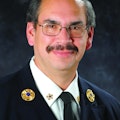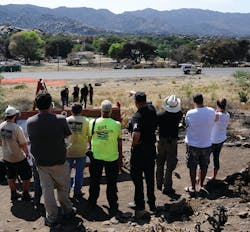According to the latest complete statistics from the national Fire Protection Association (NFPA), in 2011, the U.S. fire service responded to 30,098,000 alarms. Divided by 365 days, that comes to an average of 82,460 alarms on any given day. Every hour, 3,435 incidents were dispatched. Nationwide, that averages about 57 responses a minute. These responses include fires, EMS calls, false alarms, mutual aid, hazardous materials, hazardous conditions and other types of emergencies. From the East Coast to the West Coast, from north to south, fire department units are responding to every imaginable – and even some unimaginable – type of incident. Many of these calls are to the same addresses (the “frequent flyers”), time after time. Every day, units know they could be handling everything from small rubbish fires to a fire so large that retired Phoenix, AZ, Fire Chief Alan Brunacini describes it as having its own ZIP code. As I noted last month, the volume of breaking news involving large-loss and multi-fatality fires of all types recently has been beyond belief – the West, TX, fertilizer plant explosion, the bombings at the Boston Marathon, the Oklahoma tornadoes and the fire in Houston, TX, that killed four firefighters and critically injured several others, to name just a few.
Over the past several weeks, I have talked with many members of the fire service and our writers who all feel the same way. The bad fires just keep on coming. The worst day in the lives of family, firefighters and their departments is when a line-of-duty-death occurs. During my career, I responded to or covered the following fires with multiple firefighter fatalities: 9/11, with 343 FDNY firefighters killed; Charleston, SC, with nine firefighter fatalities; Worcester, MA, with six; Brooklyn, NY, with six; Buffalo, NY, with five; Hackensack, NJ, with five; Detroit, MI, with three; and Chicago, IL, with three. We in the fire service press have covered such incidents many times, but we never ever get used to them. For the majority of the fire service, hopefully you will never have to incur such a tragedy.
A few weeks ago, I received a message about firefighters who were missing. It was the kind of e-mail that you hope is an error. But the news we didn’t want to come true was just that. In Prescott, AZ, 19 Granite Mountain Hotshots were killed in a wildland fire. This was a shock to every firefighter and civilian alike who heard the chilling news. This was the worst wildland incident to occur in terms of firefighter fatalities since 1933. See page XX for a list of multiple wildland firefighter fatalities. Now we discuss what happened among ourselves while we wait for the official report to become public.
Around the same time, to add to the list of recent major incidents, an unmanned train consisting of 73 tank cars carrying crude oil derailed and caught fire in Lac Megantic, Quebec. Thirty-three people were killed and 17 others were still reported missing at presstime. Asiana Airlines Flight 214, a Boeing 777 with 291 passengers and 16 crew aboard, crashed while attempting to land in San Francisco. The accident cost three lives and injured 182 people. Any one of these incidents could result in a really bad day for first responders. Sometimes, as in the San Francisco incident, we can be grateful for all the people who were saved as the plane’s crews helped evacuate passengers, firefighters extinguished the fire and others onboard helped their fellow passengers to escape.
Major wildland fires continue to burn in the western United States. This month, we continue our coverage of the difficult work being done by wildland firefighters with reports from Arizona, California and Colorado; see pages 58 to66. Also in this issue, we present the third installment of our exclusive National Run Survey. This time, we compile statistics on the busiest fire chiefs, fire stations, hazardous materials unit and heavy rescue; see pages 70 to 78 for the latest statistics for career fire departments from across the U.S. and Canada.
For comments and suggestions, please contact us at [email protected].
66
2013 firefighter line-of-duty deaths at press time
1,384
2013 civilian fire fatalities at press time
About the Author

Harvey Eisner
Editor Emeritus
HARVEY EISNER was named Editor Emeritus of Firehouse® after serving 15 years as Firehouse's Editor-in-Chief. He joined the Tenafly, NJ, Fire Department in 1975 and served as chief of department for 12 years. He was a firefighter in the Stillwater, OK, Fire Department for three years while attending Oklahoma State University. Eisner was an honorary assistant chief of the FDNY and program director for the Firehouse Expo, Firehouse World and Firehouse Central conferences. He covered many major fires and disasters and interviewed numerous fire service leaders for Firehouse®
